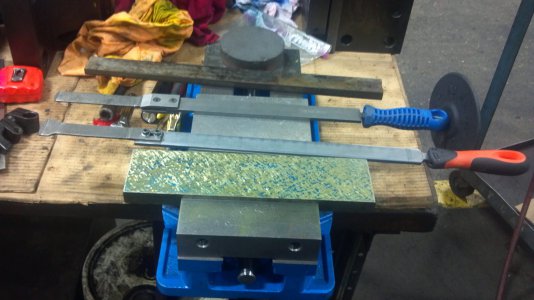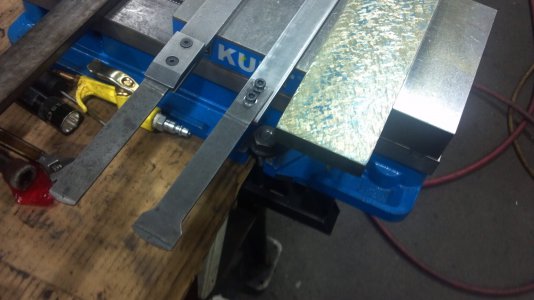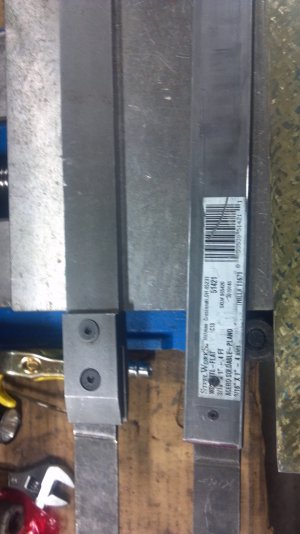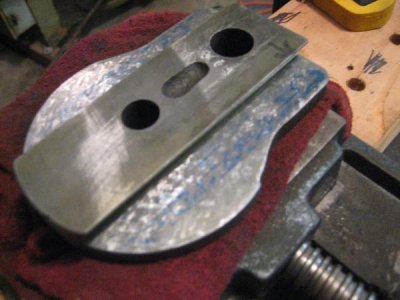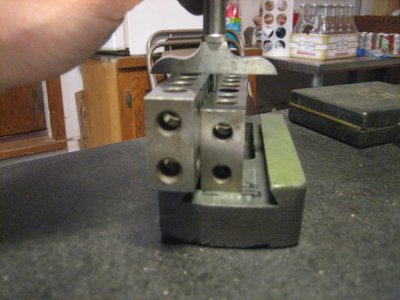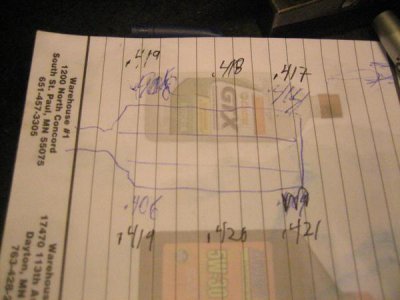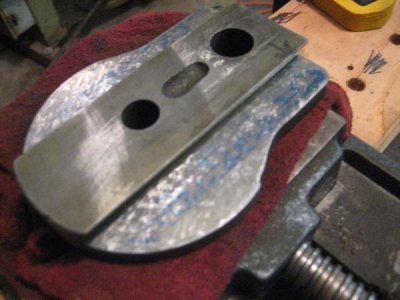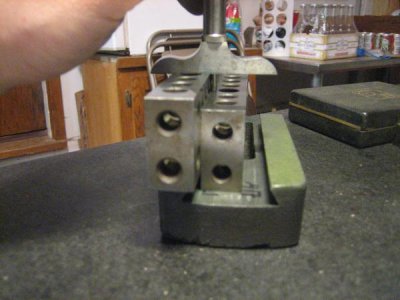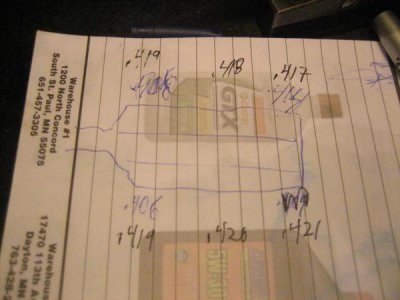This thread will be a place for me to document my project so that hopefully myself and others can learn more about scraping and machine repair.
Background - I acquired a 9" Southbend Workshop lathe last summer (2011), and it sat practically unused until this summer when I attended a scraping class taught by Richard King (July 2012).
I disassembled most of the lathe and brought it along to class to aid in demonstrations, and to begin work on. At the end of the class, I had only begun scraping the compound rest base.
After the class, I spent my free "me" time making tools for scraping (carbide tipped scraper blades, scraper handles, diamond wheel grinder, power diamond lap). I have pictures of all of these in my photobucket album titled scraping.
I also acquired various measuring tools (indicators, micrometers, surface gauges, and a 36" x 24" granite surface plate with stand). So now I'm finally to the point where I can begin scraping at home!
I scraped one surface of a cast iron angle plate just to see if I could get something to blue up ok on the surface plate to start. Last night was the first time I resumed work on the compound.
I'll post pictures as I make progress, and will definitely have questions for Richard.
Here are a couple scrapers I made
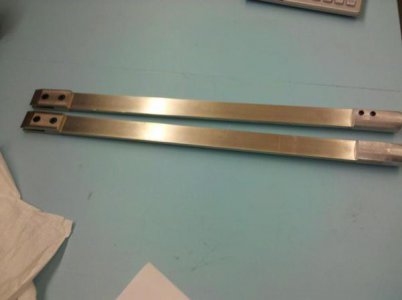
This is a couple of cycles into the angle plate, (there is some weird flaws and pitting in the casting)
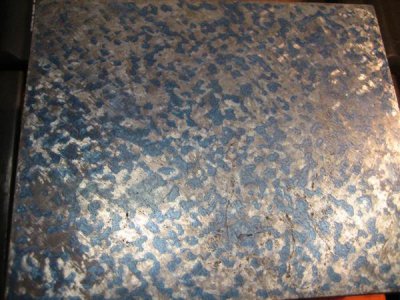
A couple nights ago I setup a dial indicator to get a rough estimate of how worn the v-ways on the bed are... By zeroing the indicator on an un-worn surface, I measured about a .0045" drop as I slid the tailstock back. Not good.
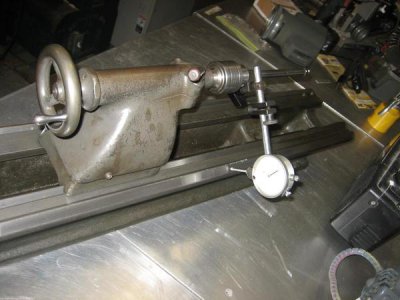
First question for Richard: I remember that wear exceeding .005" should typically be machined (milled, ground or planed) before attempting to scrape for alignment, do you think a 9" bed could be tackled on a Bridgeport and if so, how would you determine the tolerance the mill might be capable of attaining? Or if that is just a bad idea all around....
The other option I have is to just scrape the v-ways start to finish.
Also, would it be practical to tackle the v-ways with only my surface plate and say a 12" straight edge? The outermost two surfaces I should be able to spot on the plate, but the inner surfaces I don't think I can get. I have enough material to make a 12" straightedge.
Tadd
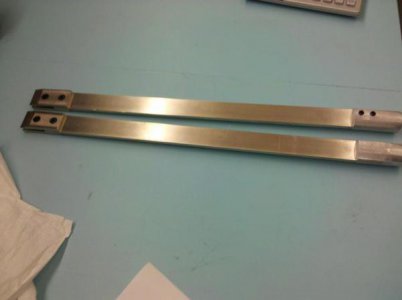
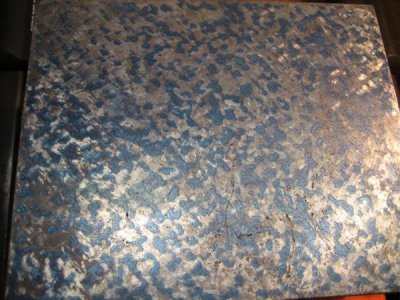
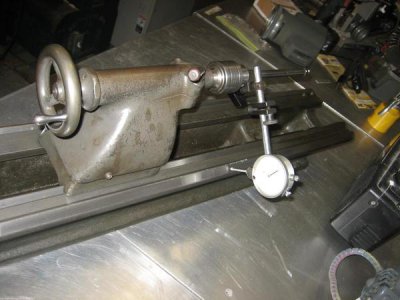
Background - I acquired a 9" Southbend Workshop lathe last summer (2011), and it sat practically unused until this summer when I attended a scraping class taught by Richard King (July 2012).
I disassembled most of the lathe and brought it along to class to aid in demonstrations, and to begin work on. At the end of the class, I had only begun scraping the compound rest base.
After the class, I spent my free "me" time making tools for scraping (carbide tipped scraper blades, scraper handles, diamond wheel grinder, power diamond lap). I have pictures of all of these in my photobucket album titled scraping.
I also acquired various measuring tools (indicators, micrometers, surface gauges, and a 36" x 24" granite surface plate with stand). So now I'm finally to the point where I can begin scraping at home!
I scraped one surface of a cast iron angle plate just to see if I could get something to blue up ok on the surface plate to start. Last night was the first time I resumed work on the compound.
I'll post pictures as I make progress, and will definitely have questions for Richard.
Here are a couple scrapers I made

This is a couple of cycles into the angle plate, (there is some weird flaws and pitting in the casting)

A couple nights ago I setup a dial indicator to get a rough estimate of how worn the v-ways on the bed are... By zeroing the indicator on an un-worn surface, I measured about a .0045" drop as I slid the tailstock back. Not good.

First question for Richard: I remember that wear exceeding .005" should typically be machined (milled, ground or planed) before attempting to scrape for alignment, do you think a 9" bed could be tackled on a Bridgeport and if so, how would you determine the tolerance the mill might be capable of attaining? Or if that is just a bad idea all around....
The other option I have is to just scrape the v-ways start to finish.
Also, would it be practical to tackle the v-ways with only my surface plate and say a 12" straight edge? The outermost two surfaces I should be able to spot on the plate, but the inner surfaces I don't think I can get. I have enough material to make a 12" straightedge.
Tadd




